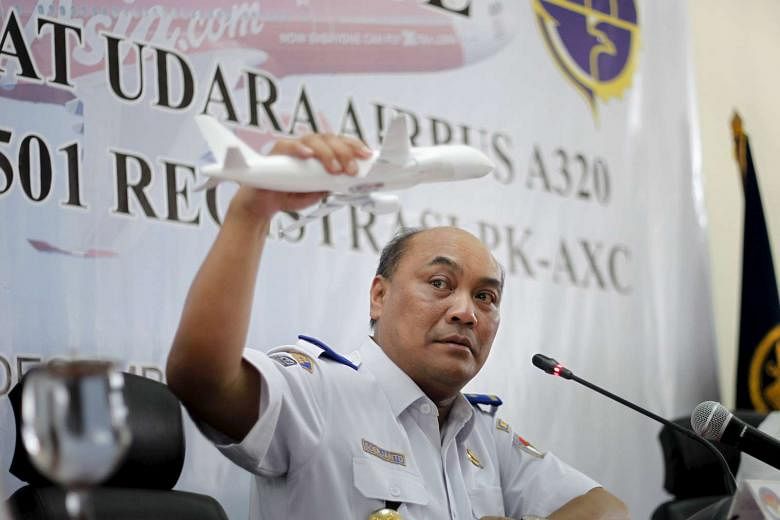The pilots of AirAsia Flight QZ8501 scrambled to resolve in mid-air a technical fault involving the rudder of the aircraft when they suddenly lost control of it.
The faulty component - the Rudder Travel Limiter (RTL), which helps pilots control the aircraft rudder - had to be fixed 23 times over the preceding 12 months, according to Indonesian investigators.
In fact, it got worse in the three months before the plane crashed into the Java Sea last December, killing all 162 people on board.
These findings were in a report released yesterday by Indonesia's National Transportation Safety Committee (KNKT), which conducted an investigation into the Dec 28 crash. "The investigation found some inadequacy in the maintenance system, leading to the unresolved, repeated problem" with the rudder system, said KNKT lead investigator Nurcahyo Utomo.
He also said that as the pilots tried to regain control of the plane, miscommunication between them sent the Airbus A320-200 into a rapid ascent, causing the aircraft to stall. The plane then plummeted into the sea.
The Singapore-bound flight went down less than halfway into a two-hour flight from Surabaya, sparking a massive rescue operation with several countries joining the three-month search for passengers and wreckage. Only 106 bodies have been recovered so far.
The KNKT said that information gleaned from the recovered flight data recorder showed that the pilots were given four warnings, alerting them to failures in the RTL system. These were later found to have been caused by cracked soldered joints in the components due to extreme temperature changes as the aircraft moved between land and air.
The flight crew were able to resolve the situation the first three times that the RTL warning came on. But when they failed the fourth time, they are believed to have broken protocol and tried to reboot the system manually, which caused a power trip that also disengaged the autopilot function.
"After the autopilot was disengaged, the aircraft started to tilt left at six degrees per second, which was very fast," said Mr Nurcahyo. "Normally, when we turn, it is two to three degrees per second."
The rotation sent the jet into a roll before it began climbing, fast. "They might have been too focused on trying to keep the aircraft level, not noticing that it was ascending, then the captain shouted 'Pull down, pull down', but the plane continued to ascend," said Mr Nurcahyo.
The KNKT probe, which involved its counterparts from Australia, France, Singapore and Malaysia, is the first official explanation of the crash.


